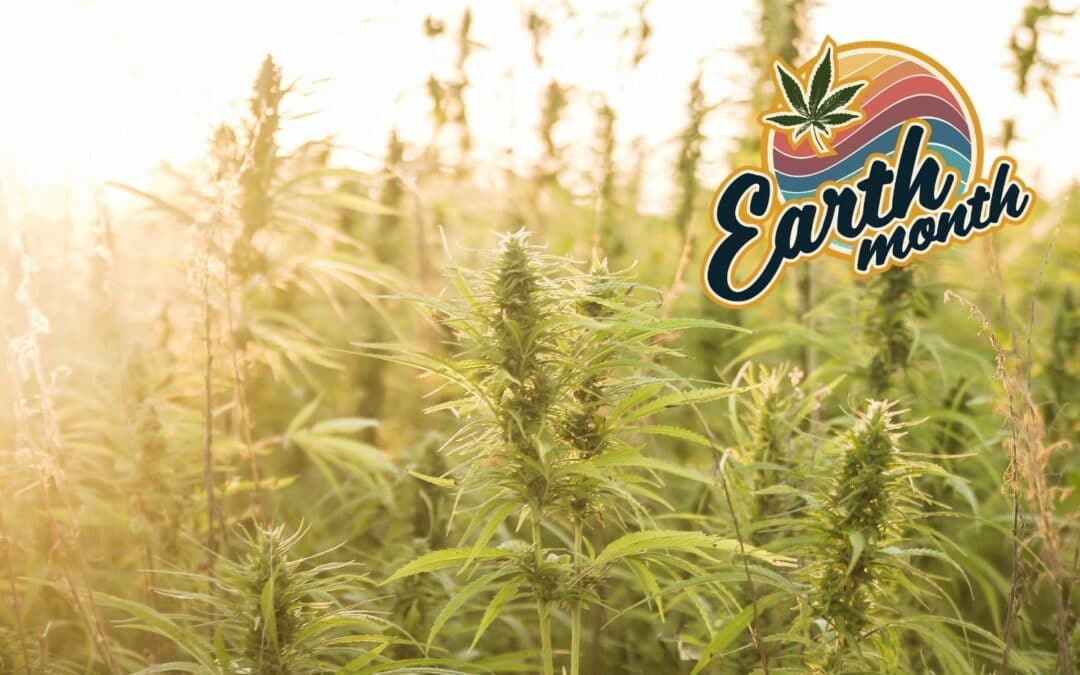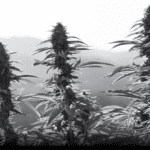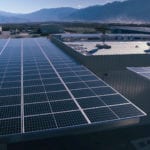Brought to you as part of Torrey Holistics’s month-long educational series on cannabis and sustainability.
For decades, movements around cannabis legalization and environmentalism have gone together like Cheech and Chong. All of this started with the countercultural revolution of the 1960s and 70s, when everything from our views on drugs to our relationship with the natural world were challenged by free-thinking hippies and beatniks. In the heartland of this progressive movement—in and around the Bay Area—disillusioned youths shunned the consumerist societies in which they lived and worked and moved en masse to secluded communes in the forests of Humboldt, Mendocino, and Trinity counties, the Emerald Triangle.
Here, these back-to-the-landers embraced sustainable, self-sufficient ways of living. They grew cannabis for spiritual and physical nourishment and for funds to support their ways of life. Extra profits were donated towards ecological restoration projects and innovations in green technology. Historian Ray Raphael noted that cannabis farming “fit in with the tradition of rural anarchy [in] the coastal hills of California.” It was the “perfect embodiment of a people’s capitalism.” Nowadays, the region is widely accepted as the cannabis capital of the world.
Fast forward 50 years and cannabis prohibition is falling like dominoes around the U.S. and the globe. As the plant continues to gain widespread acceptance, cannabis is no longer reserved just for rebellious, free-spirited types. People from all walks of life—young, old, men, women, liberal, conservative—welcome cannabis into their lives.
While the growing acceptance of cannabis is undoubtedly a boon for our society, it is critical that issues surrounding sustainability not be left to the wayside as legal markets blossom. Cannabis can have tremendous benefits for the environment, but it can also come with major detriments if care is not taken to adopt sustainable practices.
In California, there are a number of sustainability challenges facing every level of the cannabis industry. Many of these challenges arise from regulations on cannabis businesses. Because of cannabis’ federally illegal status, states with legal markets over-regulate in order to thwart the scrutinizing eyes of federal enforcement agencies. This article outlines the two biggest sustainability challenges facing the cannabis industry, as well as steps consumers can take to combat them.
Challenge #1: Cannabis Farming
Before cotton and lumber became the go-to materials for textiles, building materials, and paper, hemp (or low-THC, industrial-grade cannabis) was a vital resource for many societies around the world. Hemp is now experiencing a comeback due to its excellent sustainability profile. In particular, it is durable, versatile, great for soil health, and consumes less water than traditional crops like trees and cotton. All of these qualities make hemp a desirable alternative for materials used in everything from clothes to cars, plastics, cosmetics, and more.
Yet, despite hemp/cannabis farming’s many benefits for the environment, certain challenges still exist. Many of these challenges exist as a result of decades of cannabis prohibition, as many growers moved their operations indoors to avoid being caught by federal agents.
Several exceptions aside, sungrown cannabis is almost always the more sustainable option than indoor. Cannabis is a finicky plant and needs precise levels of lighting, ventilation, humidity, and soil composition from the time it is a seed to the time it is harvested, dried, trimmed, and cured. This means that growing cannabis indoors often requires vast amounts of energy. A report from New Frontier Data found that producing just one eighth of cannabis indoors creates 41 pounds of carbon emissions throughout its life cycle. In addition, in states like Colorado (where more energy is needed to control the growing environment) shifting to outdoor-only farms would result in a decrease of 1.3% in the state’s greenhouse gas (GHG) emissions—almost as much as the total contribution of GHG emissions from the state’s coal industry alone. Outdoor farms, on the other hand, consume anywhere from 42-96% percent less energy than their indoor counterparts.
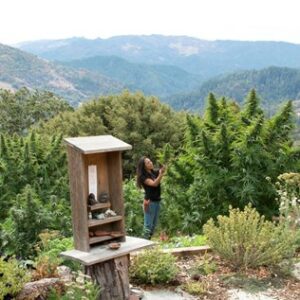
Moon Made Farms, a Sun+Earth Certified cannabis farm
Indoor cannabis also requires more water than sungrown. On average, indoor facilities use 121 gallons per square foot each year, compared to the 11 gallons used by outdoor facilities (on this point, it is important to note that cannabis requires far less water to grow than other major crops—for instance, wine, corn, rice, and nuts).
While some consumers prefer sungrown cannabis for sustainability reasons, its robust cannabis and terpene profiles, and—like wine—the varietals unique to a specific terroir, others prefer indoor for reasons like consistency, appearance, and THC content. If you identify with the latter group, be sure to purchase from brands that take measures to minimize their energy and water consumption. Canndescent, for instance, is a Southern California flower brand that powers its indoor operations with solar energy. If your favorite brand does not currently use any of these tactics, reach out! Many companies value the feedback of their customers and use it to influence future business decisions.
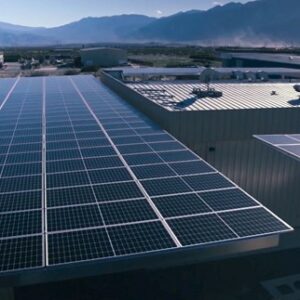
Canndescent solar-powered production facility
Finally, not all sungrown cannabis is created equal. Just like the difference between a small, organic farm versus a vast field of monocrops, it is important to choose cannabis that is grown with respect for the Earth. For one, always purchase your cannabis legally, as black market growers may use pesticides or other growing practices that threaten the health of the environment and the consumer.
To guide your decision among the legal cannabis options available, look for seals like the Sun+Earth Certification. This certification program accredits farms and brands that go beyond organic, using regenerative farming techniques to preserve the health of the land, the plant, and its workers. For more guidance, ask your cannabis consultant which Sun+Earth Certified brands are currently available on your next trip to Torrey Holistics.
Challenge #2: Cannabis Packaging
No doubt you have come home from a trip to your local dispensary, taken your newly-purchased cannabis product out of the exit bag, and opened it, only to find that it is nested within another box or tube. In addition, the actual product may occupy only a fraction of its original packaging.
What some consumers may not know is that California regulations require every cannabis product to be sealed in a child-proof, tamper-evident, opaque package with the appropriate labeling requirements stickered on. Not only that—every time a customer leaves a dispensary, said package must be placed within another opaque exit bag (which, as Torrey Holistics’ Green Team can attest, often ends up as litter on the street). While these efforts to protect children and consumers are well-intentioned, one could argue that the fact that no such requirements exist for the alcohol industry are a product of outdated stigmas surrounding cannabis.
Needless to say, cannabis packaging is a huge cause for concern when it comes to sustainability. In addition to the alarming quantities of resources that go into packaging a single item, there are currently few options for disposing of the waste in a way that minimizes its chances of ending up in a landfill. For example, the only way to dispose of an empty vape cartridge as of now is to toss it in the garbage.
So, what can a consumer do to divert their cannabis waste? According to the hierarchy of waste diversion tactics, the best thing a person can do to minimize waste is to avoid using up resources in the first place. Instead of buying multiple grams of flower or a single pre-roll, scale up and invest in bulk flower or pre-roll packs. Opt for a one gram vape cartridge instead of a half gram or disposable pen. Choose brands that use packaging made from recycled materials, like Jetty Extracts—their elegant wooden vape cartridge tips are made from salvaged wood scraps.
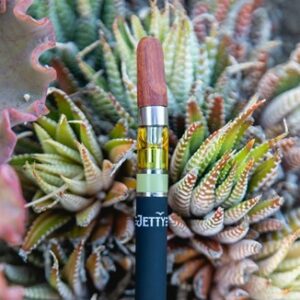
Jetty Extracts vape cartridge
Another option for minimizing your cannabis waste is to reuse or upcycle your packaging. Some brands design their packaging precisely for this purpose; Kiva’s Camino Gummies, for instance, come in metal tins that can be repurposed into containers for holding small items like jewelry or paper clips. One of my favorite ways to reuse old flower jars is to make candles. Or, you could use empty tincture bottles to create your own cannabis concoctions (a perfect use for that bulk flower you purchased).
If none of these options are available to you, simply rinse, dry, and recycle your old flower jars, vape and pre-roll tubes, boxes, and tins. Many brands package their products in materials that can easily be recycled.
Conclusion
Now that you have an arsenal of tips at your disposal (pardon the pun) for minimizing your cannabis waste, the final action item you can take right now is to contact your elected officials and demand action. On the broadest level, legalizing cannabis nation-wide should ease state regulators’ fears of federal interference and tamp down the illicit market. Ask your lawmakers to make it easier for cannabis companies to implement sustainable practices by incentivizing the use of renewable energy sources, water conservation practices, and waste diversion tactics. You can even request that California look to other states for modifying its labeling requirements—Washington, for instance, allows brands to put all of their labeling requirements on a web page, with a small QR code in its place on the package.
Torrey Holistics is proud to support brands going the extra mile to minimize their environmental footprint. To learn more about all of the sustainable cannabis options available at our store, simply ask your cannabis consultant for more information or visit our sustainability page.
Happy Earth Month from Torrey Holistics!
These statements have not been evaluated by the FDA. Nothing said, done, typed, printed or reproduced by Torrey Holistics is intended to diagnose, prescribe, treat or take the place of a licensed physician.
About the Author

References
Dalia, Kevin. “Green Garbage: A State Comparison of Marijuana Packaging and Waste.” Golden Gate University School of Law, vol. 12, no. 8, 2020. Digital Commons, https://digitalcommons.law.ggu.edu/gguelj/vol12/iss1/8.
Kentucky Hempsters. “Hemp 101: What Is Hemp, What’s It Used for, and Why Is It Illegal?” Leafly, 28 July 2020, www.leafly.com/news/cannabis-101/hemp-101-what-is-hemp-whats-it-used-for-and-why-is-it-illegal.
New Frontier Data, Inc. Cannabis H2O: Water Use & Sustainability in Cultivation. 2021, https://f.hubspotusercontent10.net/hubfs/3324860/Reports/NFD-CannabisH2O.pdf.
Raphael, Ray. Cash Crop: an American Dream. Ridge Times Press, 1985.
Russo, Sarah. “In or Out? Sungrown vs. Indoor Cannabis Cultivation.” Project CBD, 28 Feb. 2017, www.projectcbd.org/outdoor-vs-indoor-cannabis-cultivation
Summers, Hailey M., et al. “The Greenhouse Gas Emissions of Indoor Cannabis Production in the United States.” Nature News, Nature Publishing Group, 8 Mar. 2021, www.nature.com/articles/s41893-021-00691-w.

